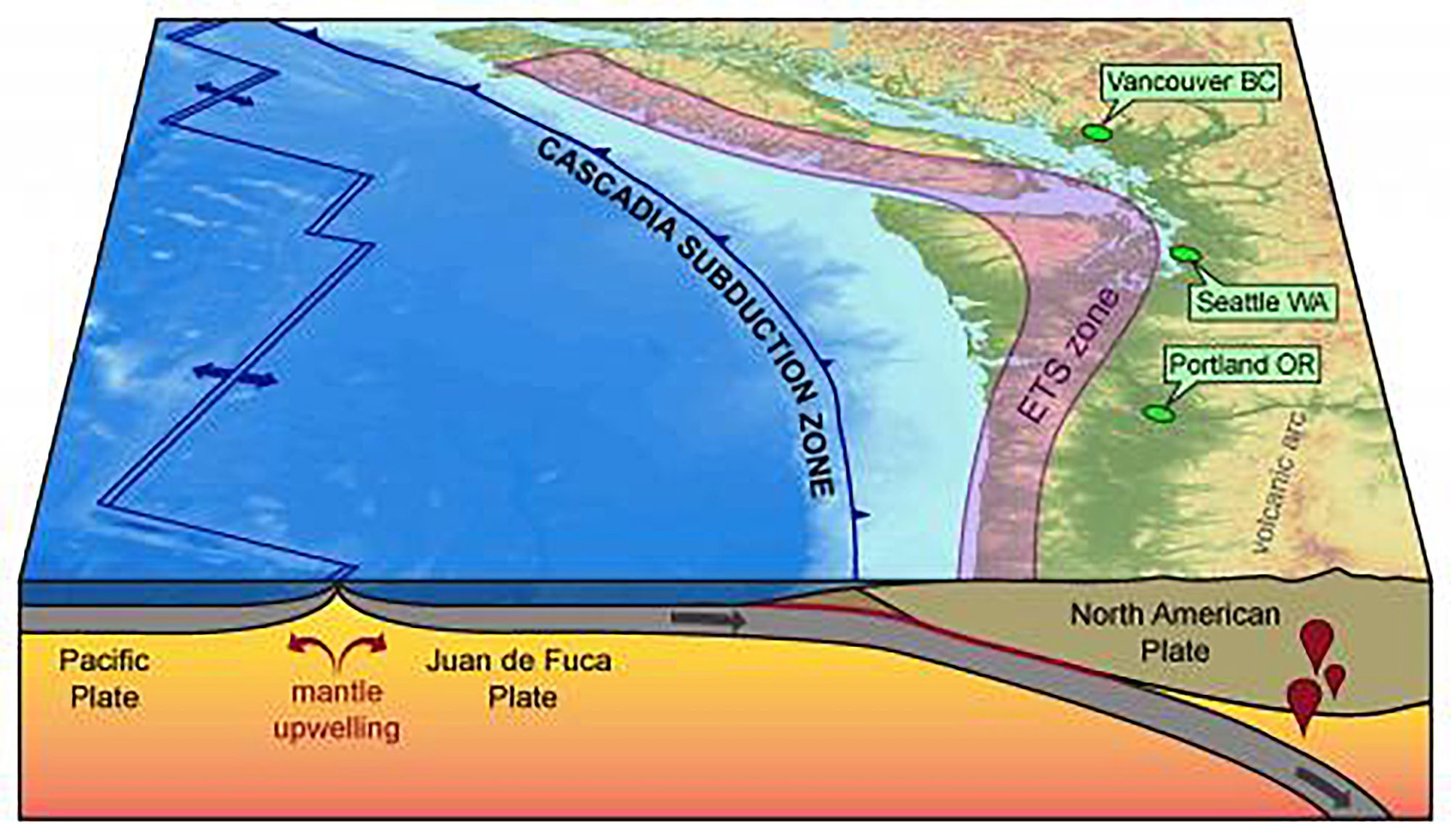The Cascadia Subduction Zone is capable of producing large-magnitude, megathrust earthquakes that will affect the performance of every new and existing bridge in the western half of Washington state. This project evaluated the impacts on bridges of a magnitude 9 (M9) earthquake to help agencies prioritize earthquake retrofit efforts and to support the development of emergency response plans.
Western Washington has over 2,000 bridges, all of which could be affected by an M9 earthquake but not all of which can or even need to be retrofitted. To evaluate the impacts of an M9 event on these bridges, the researchers developed single-degree-of-freedom (SDOF) models of structural response and damage progression for bridges in Washington state. The focus was on standard, highway overpass-type bridges built both before 1976 and between 1976 and 2018. The models were subjected to ground motions from 30 simulated M9 earthquake scenarios, for ten locations selected to reflect a variety of distances from the fault and depths of sedimentary basins, and four sets of 30 site profiles.
The mean calculated lateral strengths of both the older and newer bridges were similar for a wide range of bridge periods—the time it takes for seismic waves of energy to vibrate. They also exceeded the strengths estimated by design procedures, even after the researchers had ignored the contributions of the abutments and accounted for material overstrength. As expected, older bridge columns provided far less transverse reinforcement than newer bridge columns.
Among the ten locations studied, the results varied significantly. The estimated damage to bridges depended greatly on distance from the fault and whether the location was underlain by a sedimentary basin. Near the Cascadia Subduction Zone (CSZ), which runs from Vancouver Island, B.C., to Cape Mendocino, California, damage was predicted to be widespread for a wide range of vibration periods. The likelihood of spalling of the columns ranged from 35 to 70 percent and the likelihood of longitudinal bar buckling ranged from 10 to 30 percent, with the larger values corresponding to site profiles with softer soils. Farther from the CSZ, the flexural damage to bridges was expected to be slight for locations outside of sedimentary basins. For most locations within sedimentary basins, such as Seattle, damage levels were predicted to be low for bridge periods below 0.5 seconds. However, for bridges subjected to periods of between 0.5 and 3 seconds, the likelihood of concrete spalling ranged from 50 to 75 percent. For these long-period bridges, the likelihood of bar buckling ranged from 20 to 35 percent for stiffer sites and from 35 to 50 percent for softer sites.
This study did not account for the effects of bridge abutments, skew, or curved alignment. In addition, the study did not consider the possibility of span unseating, column shear failures, or site liquefaction, any of which could lead to bridge collapse.
The results are intended to help WSDOT more efficiently design new bridges and retrofit existing ones by allowing it to direct resources where they are most needed to reduce risk and increase resilience. The researchers recommended that within the sedimentary basins that underlie most of the Puget Sound region, agencies should prioritize the retrofit of bridges with longer effective periods (longer than 0.5 seconds), particularly those located on softer sites, to increase the resilience of transportation networks to M9 earthquakes. However, the work also suggested that outside of sedimentary basins and away from the Pacific Coast, emergency response plans can expect that many bridges will likely be available following an M9 earthquake.
Authors:
Zachary Kortum
Kan-Jen Liu
Marc O. Eberhard
Jeffrey W. Berman
Nasser A. Marafi
Brett Maurer
UW Department of Civil and Environmental Engineering
Sponsor: WSDOT
WSDOT Technical Monitor: Bijan Khaleghi
WSDOT Project Manager: Mustafa Mohamedali

